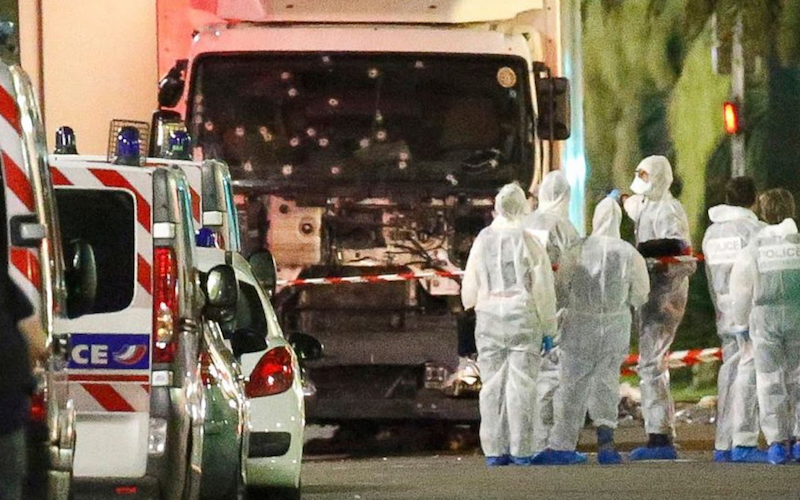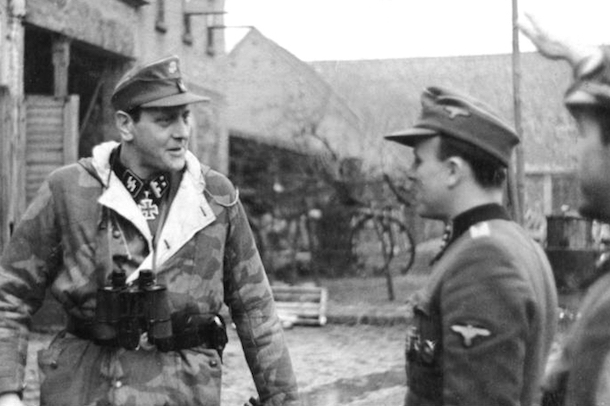
Otto Skorzeny: The Nazi who Influenced ISIS
“You cannot waste time on feinting and sidestepping. You must decide on your target and go in.” – Otto Skorzeny, Nazi Commando
The most feared nation in World War II was Nazi Germany. They had strategies incorporating new and refined tactics as well as a great arsenal of traditional, high-quality weapons to fight a new type of warfare they invented to conquer their neighbors.
These new approaches for conventional war, like blitzkrieg (lightning war), using new strategies and weapons against European countries were developed by a well-respected complement of military leaders, physicists, engineers, and quality manufacturers, integrating new materials and systems to outfit and arm a well-trained, well-disciplined military.
As the war started to end in 1945, some in Germany did not want to give up and instead, wanted to continue the war and sustain the Third Reich. One of the key people in developing a new type of warfare for Germany at the end of the war was Otto Skorzeny, a Nazi SS officer who did some very high-level work in leading commando-type raids as well as developing a new style of warfare.
Otto Skorzeny made headlines when he led a group of well-trained German commandos in Operation Eiche (Operation Oak) to rescue Benito Mussolini in 1943 from a prison in Italy. Skorzeny was one of Hitler’s “go-to” men on dangerous and difficult assignments. With the success of this rescue raid, he got promoted to Sturmbannfuhrer (Major) as well as being awarded the Knight’s Cross of the Iron Cross.
Skorzeny had a plan to develop a strategy for asymmetrical warfare where there is a real disparity between a traditional standing army and a small terrorist insurgency group.

Warfare, strategies, and tactics were all being redefined as World War II was winding down. Tactics for large military components were being redefined and modified in order to utilize smaller units.
Nazi ‘Werewolf’ Tactic: A forerunner to Al Qaeda Tactics
Instead of uniformed, regiments of soldiers fighting each other on a well-defined battlefield, the new strategy was to have some small roving bands of guerilla fighters sporadically attacking different priority targets and then disappear into the background. No large fighting units, only small units or cells
Skorzeny called this Werwolf (German spelling of “werewolf”) Warfare. It was the related grandfather to today’s ISIS terrorist cells and tactics.
This type of warfare is hard to counter because the opposing soldiers are not in a traditional military uniform or mindset. Nor are they working in a conventional, structured environment. It is more of a commando-type or covert operations approach to warfare and is seen in contemporary terrorist groups like cells of ISIS.
When Skorzeny was perfecting these new ideas, resources and available manpower were dwindling towards the end of the war. A lack of full resources as well as highly-trained personnel dictated a new approach to waging war and being creative with less equipped and trained insurgents.
The trail of training guerilla warfare and subversive tactics may have started in Germany at the end of World War II, but it advanced into Egypt, South America, and even into the United States after the war with Skorzeny as a paid consultant. Eventually it spread to Al Qaeda through the efforts of Skorzeny, his subordinates and Yasser Arafat. Skorzeny was, in effect, a guerilla warfare consultant for hire, to whomever wanted his new tactical and creative ideas, including the United States Special Forces.
Skills that are needed
The basic focus of Werewolf Warfare is a small, but well-organized, unit or cell inflicting as much damage and chaos as it can, and then, slipping back into society.
A small unit is not focused on traditional military skills. It is more focused on things like flexibility, adaptability, creativity, and technology skills in order to acquire a target, plan a well-coordinated attack, and accomplish the objective to elicit the enemy’s reaction and demoralization.
It is almost impossible to defend against the types of destructive attacks that a small unit may inflict. The limit of the small unit is restricted only by the amount of creativity among its members. Small units can inflict huge damage.
Chances are, another attack like 9/11 won’t happen because the strategy and scenario has already been used and defenses have been established for that type of approach.
In guerilla warfare it is not about establishing an attack pattern, but just the opposite. If you expect the terrorist unit to attack A after they already attacked an A-type of location, their strategy is to attack a B or C or maybe both.
Setting up a well-planned attack does not include moving regiments of soldiers and coordinating hundreds of vehicles. A well-planned attack from a guerilla unit or cell might be as little as the coordination of two or three individuals creating one event (attack) or a sequence of events which play off one another. It may include one or more targets and be sequenced so the initial victims’ reaction of the first target’s attack flows into being in the target range of the second attack.
The goal is to develop multiple target strategies that flow into the next target to maximize the impact of a small insurgency unit on a single mission. Many times, there may be only one target selected.
Other times, a more sophisticated approach would be to sequence events where bombing a downtown building would create havoc and push survivors to leave the area. As they flow into the train station to leave the area, the train station becomes the next target and is blown up taking out more victims.
As evidenced in the latest terrorist attack in Nice, France, something as simple as a truck can cause a major incident within a crowded area. The devastation and residual impact is not because of a large strike force. One motivated person can accomplish a lot.
Terrorist attacks and the use of cyberattacks will become more frequent as the terrorists have more successes. We need to insure that every building and critical element of infrastructure has defensive capabilities, both physical and electronic, to protect intelligence and network resiliency.
The Nazis were no JV team when it came to death and destruction. Anyone trained by them or trained in their tactics should be considered to be at the same level of proficiency.
